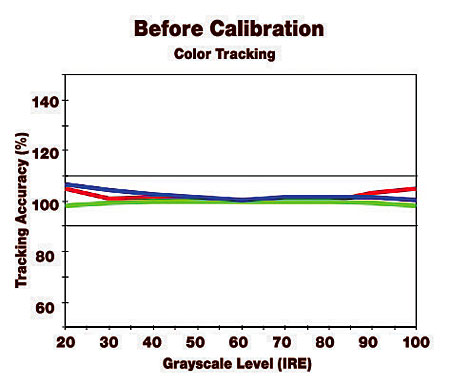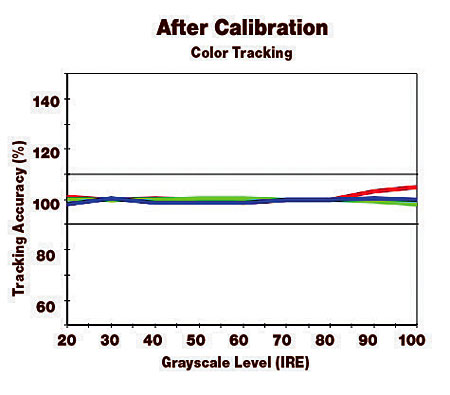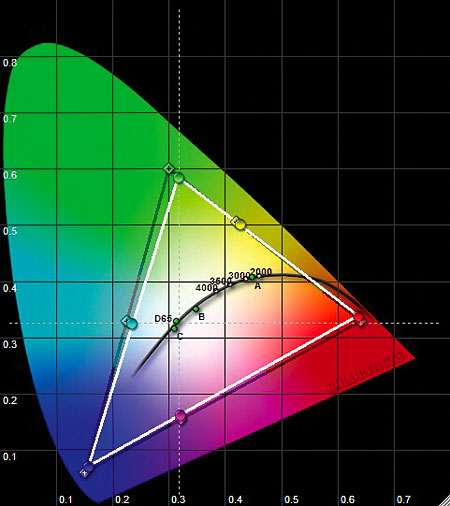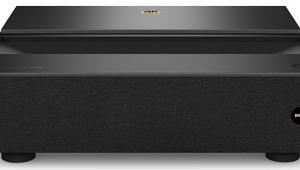Planar PD8150 DLP Projector HT Labs Measures
Full-On/Full-Off Contrast Ratio: 6,049:1
I measured a different sample than the one KD reviewed. There were 23 hours on the lamp of my sample at the start of the tests. The Film gamma looked too harsh with the added brightness available from my smaller Stewart Studiotek 130 screen (16:9, 78 inches wide, 1.3 gain), so I used the CRT gamma for these measurements, with DynamicBlack on, the lamp set to Economy, and all test inputs HDMI, except as noted.
In Film gamma, which KD used throughout his review, the black level was actually lower (about 0.0035 ft-L), producing a peak contrast ratio of 6,049:1. Using the CRT gamma, the peak contrast ratio from the readings shown was 4,296:1 (blacks rose to .005 ft-L). It’s worth noting here that the Planar’s black levels, in either gamma setting, are comparable to those we’ve measured on all but one or two DLP projectors, and its combination of a high peak light output and impressive blacks are exceeded (on the black level side) only by the latest JVC LCOS designs.
With DynamicBlack off and the lamp on Standard, the peak white level increased to 29 ft-L, but the increase in black level (to 0.017 ft-L) decreased the contrast ratio to 1,736:1.
The PD8150’s video processing was excellent nearly across the board on all of my standard-def and high-def tests, dropping to good only on one of the SD tests for jagged edges. This result was among the best I have seen on a video display, regardless of price.
Overscan was effectively zero at all resolutions from 480p to 1080p.


The Planar’s color tracking in the 6500K setting, even before calibration, adheres closely to the D65 standard. The closer the three color curves overlap, the better. Calibration improved it further. The pie-shaped CIE chart shows the set’s color gamut in the SMPTE C setting (white triangle). It is close to a perfect overlay of the standard (black triangle), apart a slightly undersaturated green, which experience suggests will be essentially invisible in actual viewing. The color gamut was also measured in the Rec. 709 setting (not shown). The two results are very similar, the differences visible only by careful inspection of the charts (and not at all by eye).

The projector’s HDMI luma (black and white) and chroma (color) response were above criticism at 1080p. From 1080i on down in HDMI, the luma response remained strong, the chroma just slightly down in level. Component resolution (measured up to 1080i) was only marginally less impressive.—TJN























































